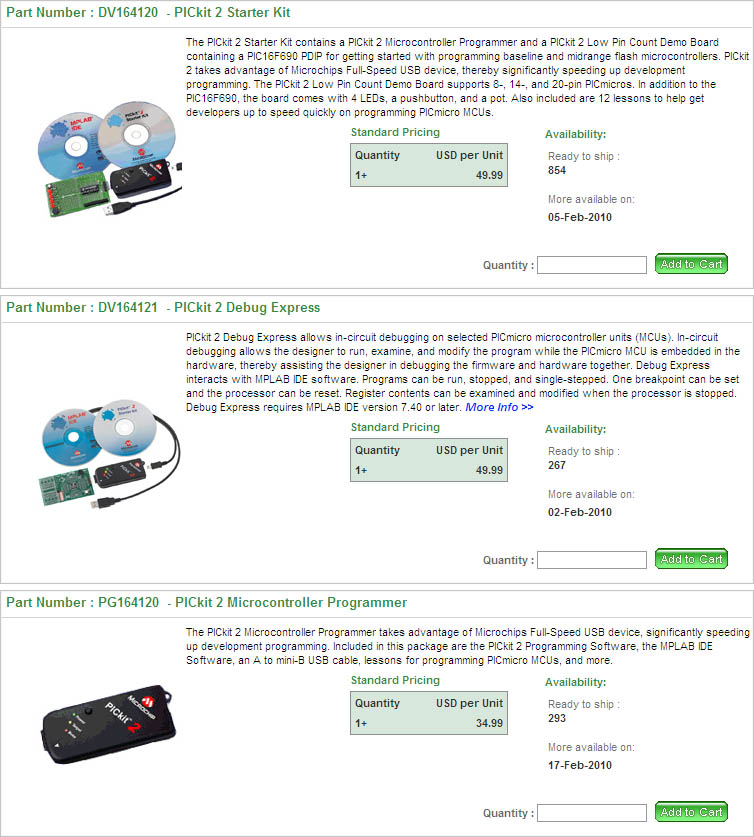jakeselectronics
Member
I'm sure its been spoken about before.
But oh well.
http://www.microchipdirect.com/ProductDetails.aspx?Catalog=BuyMicrochip&Category=Starter Kits&mid=1&treeid=6&lmid=607
The first 2 products on that page.
(After seeing this, I don't think I want a PICkit 3: YouTube - EEVblog #39 - PICkit 3 Programmer/Debugger Review)
So out of the 2 mentioned in the title and on microchipDIRECT.
Exactly same price for the 2.
Which 1 do I get?
But oh well.
http://www.microchipdirect.com/ProductDetails.aspx?Catalog=BuyMicrochip&Category=Starter Kits&mid=1&treeid=6&lmid=607
The first 2 products on that page.
(After seeing this, I don't think I want a PICkit 3: YouTube - EEVblog #39 - PICkit 3 Programmer/Debugger Review)
So out of the 2 mentioned in the title and on microchipDIRECT.
Exactly same price for the 2.
Which 1 do I get?


